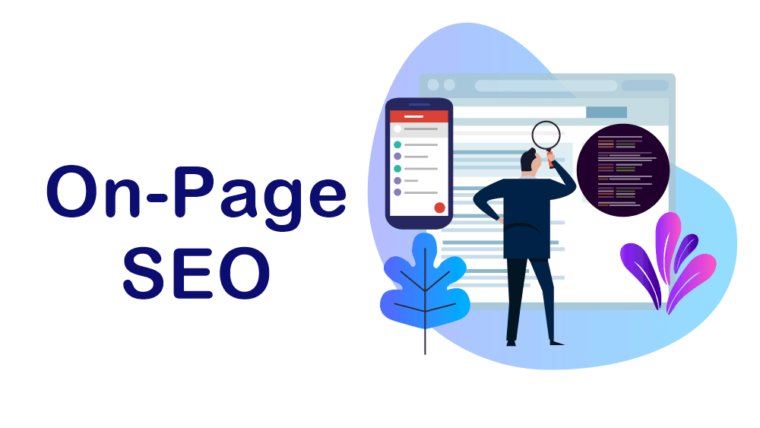Google Analytics is a powerful tool for businesses of all sizes. When used properly, it generates important information that can help to make valuable business decisions in online marketing or SEO efforts.
In this week’s Whiteboard Friday, guest host Alex Ratynski goes through five important steps that local businesses can take to configure Google Analytics efficiently. Check it out below! https://fast.wistia.net/embed/iframe/sq50wfl08w?videoFoam=true

Video Transcription
Hey, Mozzers. My name is Alex, and I’m the founder of Ratynski Digital. We are a local SEO consultancy for small and medium-size businesses. Today what I want to talk about is how to configure Google Analytics for local businesses.
Now Google Analytics is a super powerful and efficient tool when used properly and when configured accurately. This tells us important information about our website, our visitors, what pages are performing well, perhaps even what search queries we’re coming from, especially when it’s connected with Google Search Console. A lot of important information that can help us to make valuable business decisions for our online marketing or SEO efforts.
1. Exclude bots and spiders
Now there are five important steps we’re going to talk about today for how we can configure our Google Analytics account the most efficiently. The first one is to exclude bots and spiders. Now this is important because some studies have found that upwards of 25% of all traffic is bot traffic. Any of us that have really gotten super granular into our Google Analytics account, I’m sure we’ve actually seen some of those examples of very obvious bot traffic.
So the way we can actually do this is Google actually makes a nice little tool within Google Analytics. You go to Admin > View > View Settings and there’s a nice little box that says Bot Filtering. What this does is it pulls from the IAB, the Interactive Advertising Bureau and it actually makes sure that it pulls from the list of known spiders and bots and makes sure we’re to filter against that.
2. Filter spam and personal traffic
The next step we want to filter spam traffic and personal traffic. Now the reason for this is inaccurate data is worthless data, right? If we don’t have accurate information, we’re really going to struggle to make accurate business decisions regarding our SEO efforts or our online marketing. I can’t tell you how often I run into business owners who have wildly inaccurate numbers and they’re trying to make decisions based off of it.
So it’s super important that we get as accurate information as we can. There always will be some margin of error, but anything we can do to minimize that the better. The way we can filter out our own traffic is to go to Admin > View > View Filters and then Add Filters. What we want to do is make sure to filter out our own IP address, perhaps the IP address of our team, our home office, our physical main office location, things like this.
The way we can do that is to search “What’s my IP” in Google. You’ll actually be able to find your IP address, and then from there you can actually exclude it.
3. Set up goals
Number three, setting up goals. Goals are super important because setting up goals actually helps us to track our success, right? It’s success tracking. So we can set up goals by going to Admin > View > Goals and then New Goal.
Destination based goals
There’s a variety of different goal types that we might be able to set up, and it really depends on the business and what you’re looking for. But one of the most popular ones is a thank you page or a destination based goal.
For example, imagine you’re an HVAC company who’s trying to acquire new customers and you want to see how is your website performing, which pages are bringing the traffic, and what’s kind of the URL path or the goal path if you will.
So a way we can track that is by using a destination-based goal. We want to make sure that after somebody fills out a form, they actually are sent to that thank you page, and every time somebody interacts with that thank you page, they land on it, it can actually be counted as a goal. This is really helpful to kind of see the success of what we’re looking for, whatever it is, our business goals, what we’re trying to achieve that month or that quarter that we can track that accurately.
Event based goals
Now another type of goal, there are more than two, but we’re just going to talk about two today — destination based goals versus event based goals. Event based goals are a little more advanced to set up, not too tricky, but a little bit more so than destination based goals. Event based goals have nothing to do with a specific page or URL, but actually, as you might guess, the actual event that happened.
So, for example, if a user fills out a form or they click a specific button, those are examples that can be tracked to an event based goal. Now there are some pros and cons to each. A destination based goal, if you have any specific parameters within the URL and it doesn’t match exactly, you might not be able to be counting for that goal.
A way around this is you can change it from “equals to” to “begins with.” Another option, it’s probably a little bit more of a better option, is to learn regular expressions. That can help us to kind of filter out those different options and get us more accurate information. With event based goals, another little caveat that we want to watch out for is to make sure that we have proper validation set up.
So, for example, if a user starts to fill out a form but doesn’t actually fill it out, when they first click that button, it might have been tracked as a goal, even though they didn’t actually complete that goal. So there’s a couple extra steps we want to make sure that we can figure out before we kind of publish it and leave that. That way we can get accurate information.
4. Connect GA to GSC
Number four, connect Google Analytics to Google Search Console. Now we have these two powerful resources of reporting and information, and we want to make sure they can talk to each other efficiently. As we all know, Google Search Console has a lot of valuable data regarding our organic search, what specific search queries, specific pages, how they’re performing, the average position, lots of information like this.
We want to make sure that it’s connected to our Google Analytics account. Now a way we can do that is by going to Admin > Property > Property Settings and then there’s a little choice there for Search Console. Now before we do this, always make sure that you actually have your Google Search Console account set up. That’s always step one. So if we can get that set up, then it’s going to be a lot easier to connect those two.
In fact, you can’t do it unless you’ve set up your Google Search Console. So make sure that’s set up and then make sure you can connect those.
5. Use UTM tracking codes
Then last but not least, use UTM tracking codes. UTM tracking codes are a really powerful way for us to track the effectiveness of specific campaigns, where did our users come from, our website visitors come from, and what specific sources or mediums or campaigns were effective in that regard.
An example of this is you can add a UTM tracking code in your Google My Business link profile so that any users that come from Google My Business, in your Google Analytics account you’ll be able to accurately see that categorization of website visitors that came specifically from Google My Business. Now this needs to be done regularly, not in the sense of Google My Business, but it needs to be done regularly for each campaign.
So if you’re a smaller, local business who maybe has a limited amount of time or budgets for whoever might be working on this, maybe it’s better to focus on just some of the larger campaigns, anything that’s a little bit more permanent or any specific large campaign. Perhaps you’re doing a local event or you have a special promotion a couple times a year. Those might be events that we really want to track the effectiveness of these campaigns and using UTM tracking codes.
We can actually set this up, for anyone who’s interested in setting up their UTM tracking code, you can use Google’s Campaign URL Builder. We will make sure to link to that exact page here in the notes below. But there’s a couple of different components of a UTM tracking code. Now we’re just going to focus on three today, those being the medium that they came from, the source, and then the campaign name.
So an example of this might be the medium being email, the source being whatever specific newsletter was sent out, and then the campaign name would be what you actually want it to show up as in Google Analytics, how you want that campaign categorized. So those are the three different sections of what might be included in your UTM tracking code. You can enter all that in within Google’s Campaign URL Builder. There’s also a variety of other URL builders. But Google provides one that makes it nice and easy for us.
Pro tip: learn Google Tag Manager
One last pro tip. Learn Google Tag Manager. There’s a bit of a learning curve to Google Tag Manager, but it’s definitely possible. I guarantee you can do it. When you learn Google Tag Manager, it makes a lot of these other things a lot easier, especially with setting up things like event based goals and connecting some of our different accounts, like Google Search Console and Google Analytics even.
Google Tag Manager is a super powerful tool. That’s all we have today for this week’s Whiteboard Friday. Please feel free to reach out, ask any additional questions on Twitter at @alexratynski. You can also reach me at ratynskidigital.com. Feel free to send me an email. I’m more than happy to speak to the Moz community. I absolutely love everybody who’s here.
Really appreciate your guys’ time. That’s all for this week, and until next week when there’s another edition of Whiteboard Friday.
Source: https://moz.com/blog/google-analytics-for-local-business




